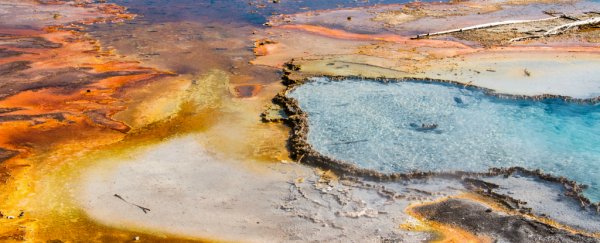It sounds like something out of Norse mythology, but new evidence suggests that all complex life on Earth, including humans, might have evolved from Asgard - a large group of microbes that were once found all over the world.
These microbes have been named Loki, Thor, Odin, and Heimdall, after the gods of Norse mythology, and a new study suggests that they could be part of the family tree from which we all evolved. These Asgard microbes might even be our oldest ancestors.
The debate over how complex life started on Earth has been raging for centuries. On our planet, there are three kingdoms of life: bacteria, archaea (which includes thermophiles and other extremophiles), and eukaryotes.
We belong to that third kingdom, the eukaryotes, along with all other multicellular life, including animals, fungi, and protists. Not only are eukaryotes more complex than the other two kingdoms, we're also a lot newer.
While bacteria and archaea both seem to have arisen around 3.7 billion years ago - not too long after the planet was formed - it was roughly another 1.5 billion years or so before eukaryotes appeared, and no one is quite sure where they came from.
The leading hypothesis is that, at some point, an archaea host took up a bacterium, and the symbiotic relationship between the two ultimately led to eukaryotes.
That bacterium is suspected to belong to a class called alphaproteobacteria, which, over time, ended up becoming mitochondria - the 'powerhouse' of the cell.
But, until recently, no one had any idea about the archaea species that swallowed this bacteria.
And that's important, because the big, lingering, question is this: was it a primitive archaeon that took on the bacterium, or had the archaeon already become more complex? Was this symbiosis the cause of eukaryotism, or a consequence of it?
That's an important question, because the answer will ultimately tell us where we came from. And we might finally be getting closer to figuring it out.
The first clue came in 2015, when Thijs Ettema from Uppsala University in Sweden discovered a new type of archaean called Lokiarchaeota - or Loki for short - in sediment at the bottom of the ocean between Greenland and Norway.
They didn't actually find any of these microbe cells themselves, but they discovered traces of its DNA at depths of 2,300 metres (7,545 feet), and an analysis of their genome revealed that they were the closest living relatives of all eukaryotes, as Ed Yong reports for The Atlantic.
Then, last year, a team from the University of Texas in Austin found traces of DNA from a closely related archaeon, which they called Thorarchaeota (or Thor), in North Carolina.
Now, in a paper published this week in Nature, a collaboration between Ettema, the Texan team, and other researchers from around the world, has found the DNA of even more of Loki's relatives in some of the most remote corners of the world, including Yellowstone National Park, deep-sea vents near Japan, and a hot spring in New Zealand.
Continuing the theme, they've named their new finds after the Norse gods Odin and Heimdall.
In addition to Loki and Thor, these latest discoveries are enough to classify a whole new 'superphylum', which the researchers have called Asgard - and they say we either evolved directly from it, or from very close relatives.
"By using new methods to obtain genome data from microbes that cannot be grown in the laboratory, we identified a new archaeal group that is related to the host cell from which eukaryotic cells evolved," said Ettema.
"These are very exciting times."
Finding the DNA of these microbes was significant, but the real surprise came when the team studied their genes in more detail, and discovered some unexpected complexity.
Many genes within the Asgard species were previously thought to be unique to eukaryotes, such as genes for building and remodelling internal skeletons, and transporting molecules around cellular compartments.
That might sound like these archaea were already well on their way to becoming eukaryotes before they swallowed a bacterium, but the team suggests it's not so clear cut - all of these genes were found scattered throughout the four Asgard archeas, and none of them had the full set.
"These archaea were somehow primed to become complex," said one of the team, Anja Spang from Uppsala University. "However, the picture is far from being clear on exactly how this could have happened."
What's really holding up the research now is that, so far, no one has been able to see any of the Asgard archaea in the flesh, so to speak - they're still only known from their DNA.
And that's what the team is now working on - heading out to remote parts of the world trying to find any trace of the original cells in the sediment record, to get a better idea of how they looked, and how complex the Asgard archaea really were.
"It would be great if we could isolate or grow Asgard cells, and study them under the microscope," said Ettema.
"I am convinced that this will reveal more important clues about how complex cells evolved. Ultimately, our microbial ancestry will be uncovered."
We'll be following the progress closely, so watch this space.
The research has been published in Nature.
